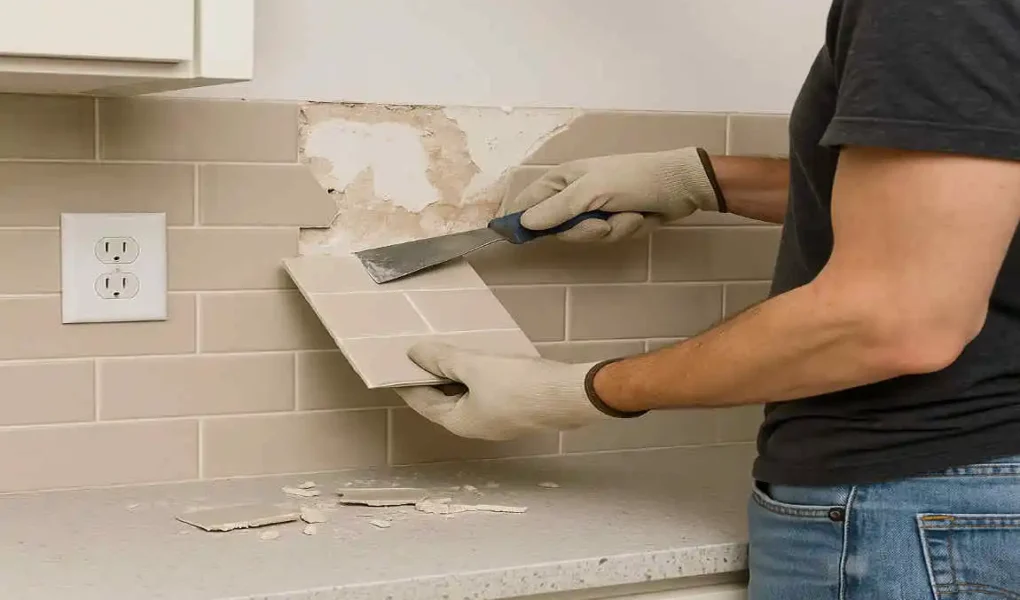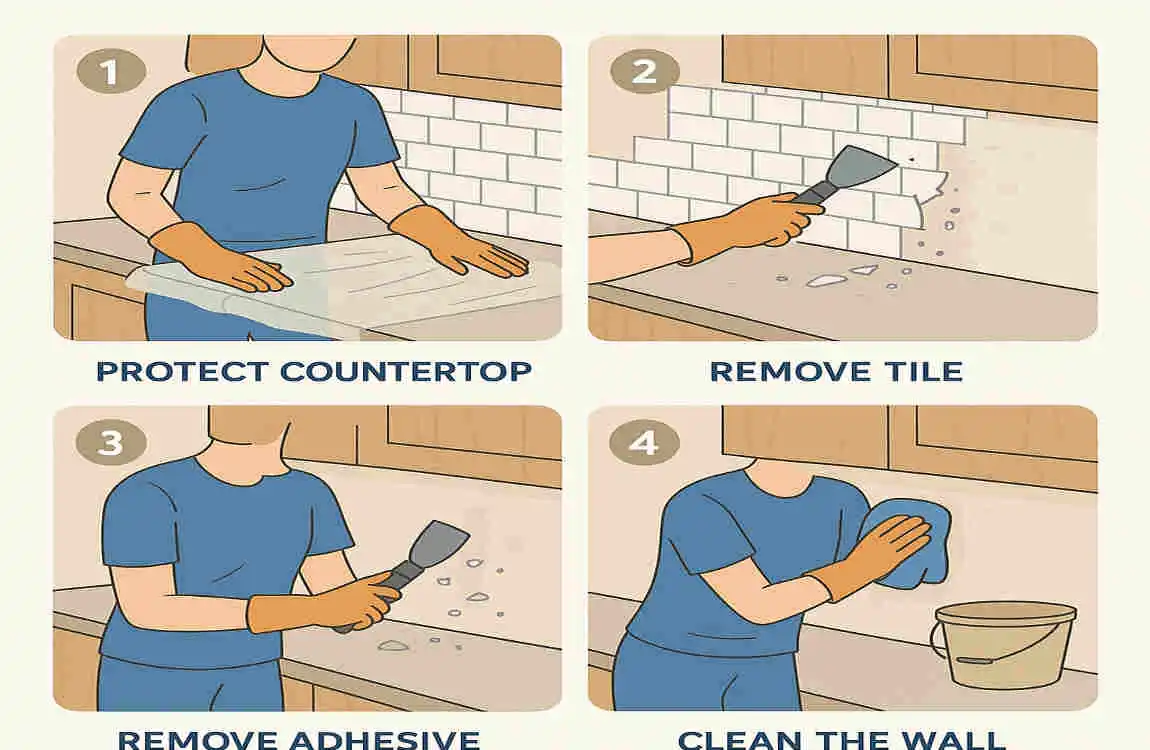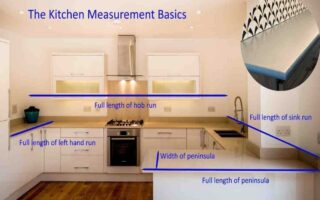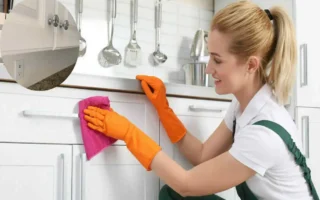Removing a kitchen backsplash might seem like a daunting task, but it’s a project many homeowners face when updating or repairing their kitchens. Whether you’re aiming for a fresh new look, fixing damage, or simply preparing the walls for a new design, knowing how to remove backsplash from kitchen surfaces properly is essential. Doing it the right way not only keeps your walls intact but also saves you money by avoiding costly repairs.
A home kitchen backsplash is the protective wall area right behind your countertops and stove. Its main job is to shield your kitchen walls from water splashes, grease, and stains that happen while cooking or cleaning.
Backsplashes come in many materials:
- Tile (ceramic, porcelain, or stone) – the most common choice
- Glass – sleek and modern
- Metal (like stainless steel) – durable and industrial
- Stone (marble, granite) – elegant and natural
- Peel-and-stick options – quick and temporary fixes
Besides protecting your walls, backsplashes add style and personality to your kitchen. They can brighten up the space, create a focal point, or match your kitchen’s overall design.
Reasons to Remove a Kitchen Backsplash
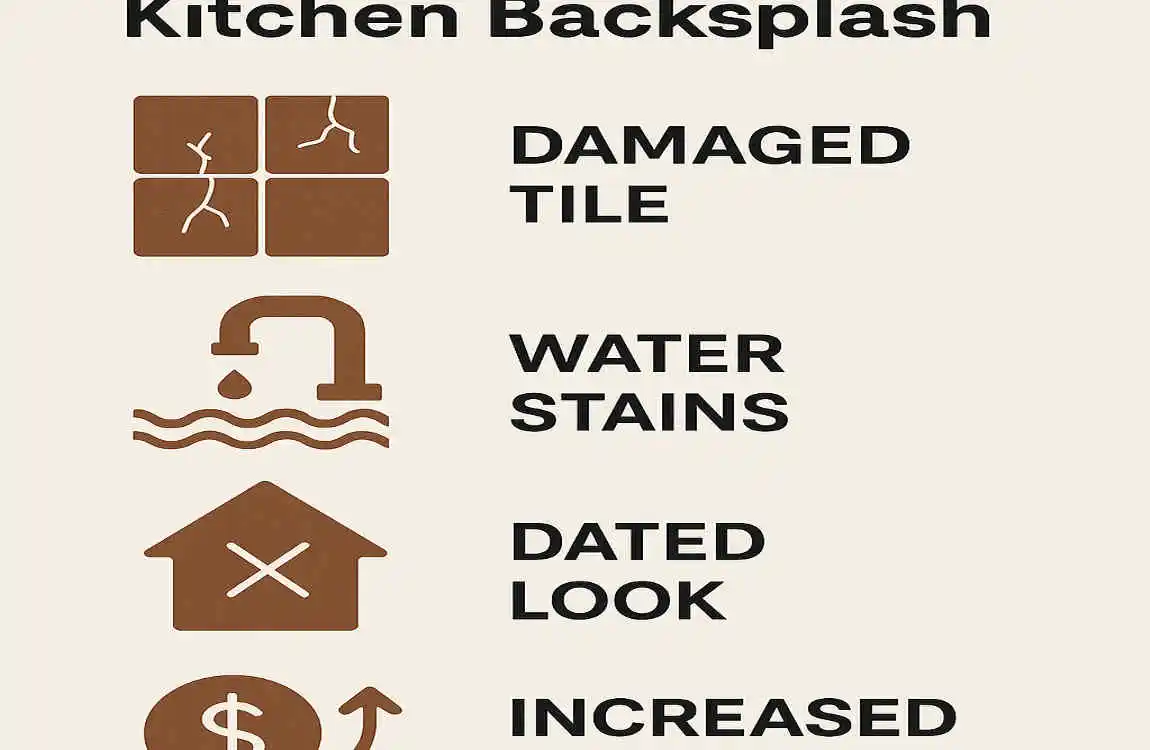
You might wonder why anyone would want to remove their kitchen backsplash. Here are some common reasons:
- Remodeling or Redesigning: You may want a new kitchen style, and the old backsplash no longer fits your vision.
- Damage or Wear: Tiles can crack, grout may discolor or crumble, and that can make your kitchen look outdated or messy.
- Water Damage or Mold: Leaks or spills can lead to mold behind the backsplash, which is unsafe and needs fixing.
- Preparing Walls: If you’re repainting or installing a new backsplash, removing the old one is often necessary.
Understanding how to remove backsplashes from kitchen surfaces carefully is essential to avoid causing extra damage during these updates.
Essential Tools and Materials Needed for Removing a Kitchen Backsplash
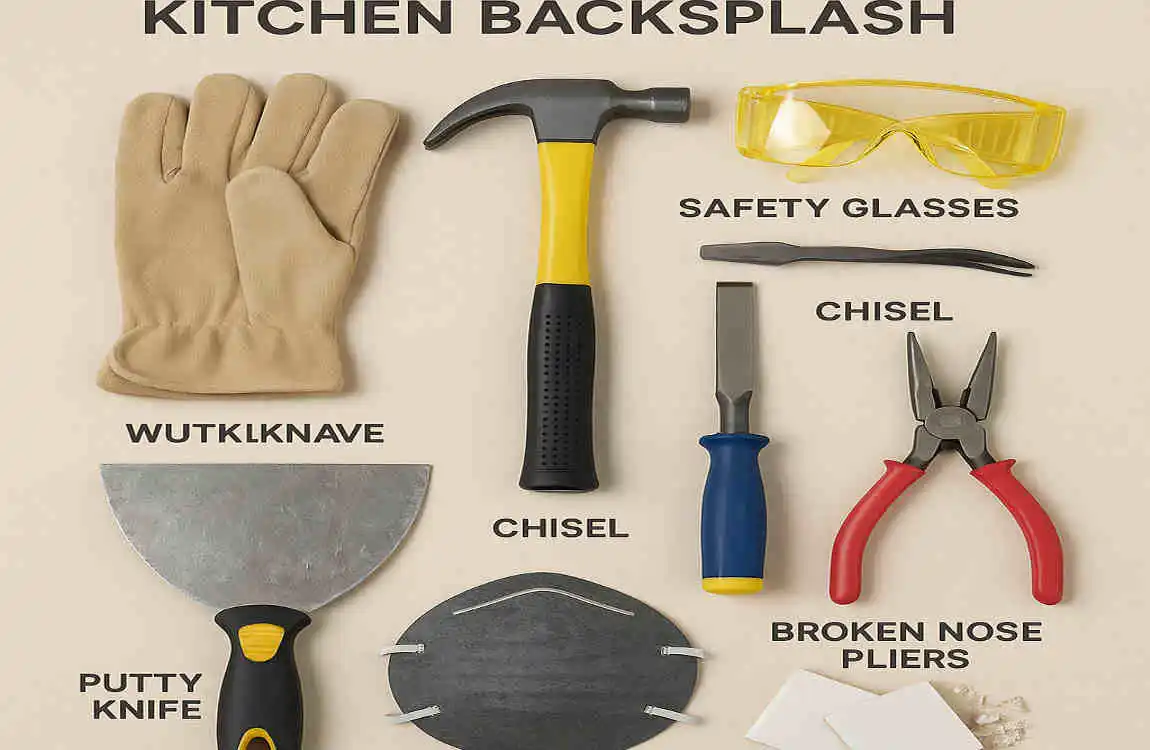
Before you start, gather these tools and safety gear:
- Protective gear: Gloves to protect your hands, goggles for eye safety, and a dust mask to avoid breathing in particles.
- Putty knife: For prying tiles or scraping adhesive.
- Utility knife: To cut through grout or caulk.
- Hammer and chisel: To gently knock loose stubborn tiles.
- Pry bar: Helpful for lifting larger sections.
- Scraper: For cleaning sticky residues.
- Heat gun or hairdryer: To soften the adhesive for easier removal.
- Optional: Drop cloths to protect countertops and floors, painter’s tape, and a bucket with a sponge for cleanup.
Each tool plays a key role. For example, scoring grout with a utility knife reduces tile damage, while a heat gun softens glue, making tiles easier to pry off.
Step-by-Step Guide on How to Remove Backsplash from Kitchen
Step 1: Prepare Your Work Area
Clear everything off your countertops and cover surfaces with drop cloths or old sheets. Protecting your kitchen from dust and debris is crucial. If your backsplash surrounds electrical outlets or switches, turn off the power at the breaker first to avoid accidents. Remove outlet covers and switch plates carefully.
Step 2: Score the Grout Lines (for tiled backsplashes)
Use a utility knife or grout saw to cut along the grout lines around the tiles. This step loosens the grip between tiles and walls, helping prevent wall damage when you remove the tiles.
Step 3: Loosen Tiles or Backsplash Material
Insert a putty knife or chisel behind a tile, carefully and gently pry it away from the wall. Work slowly to avoid pulling chunks of drywall off with the tile. For stubborn tiles, tap the handle of the chisel lightly with a hammer or use a heat gun to soften the adhesive. Be patient—rushing can lead home kitchen to costly damage.
Step 4: Remove Adhesive or Residue
After tiles are gone, you’ll often find leftover glue or mortar stuck to the wall. Use a scraper or putty knife to remove the residue. For some materials, dampening the wall with warm water and scrubbing with a sponge helps soften stubborn spots. Your goal is to achieve a smooth surface that is ready for the next step.
Step 5: Repair and Prep Walls for New Installation
Inspect the wall for any holes, dents, or rough patches left behind. Use spackle to fill gaps and sand the surface smooth once dry. Clean the wall thoroughly to remove dust. If the damage is extensive or you’re unsure, consider hiring a professional for repairs before installing a new backsplash.
Common Challenges and How to Overcome Them
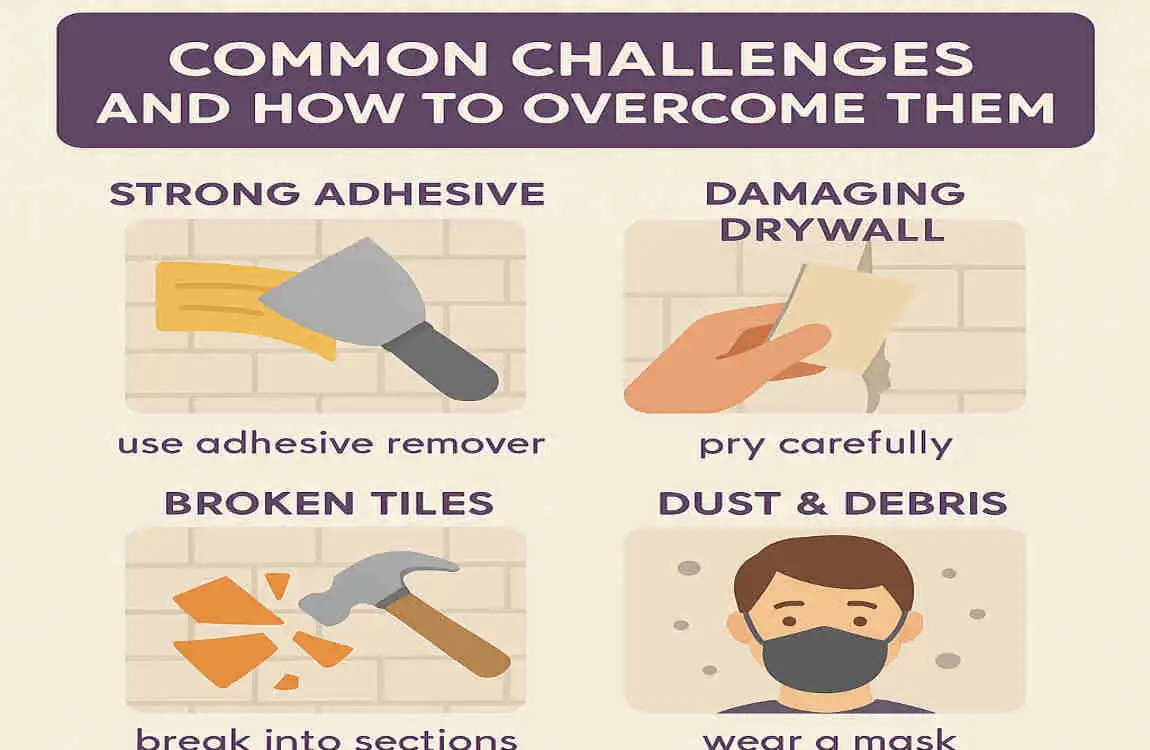
Removing a backsplash isn’t always smooth sailing. Here are challenges you might face:
- Tiles stuck tight to walls: Use heat and patience to avoid ripping drywall.
- Mold behind backsplash: Wear a mask and clean the mold thoroughly with a mold remover.
- Delicate or expensive materials: If your backsplash is made of glass or metal, be extra gentle or consider hiring a professional.
- Electrical outlets or plumbing: Always turn off the power or water supply before working near these areas.
Being aware of these issues beforehand can save you stress and damage.
Safety Tips When Removing a Kitchen Backsplash
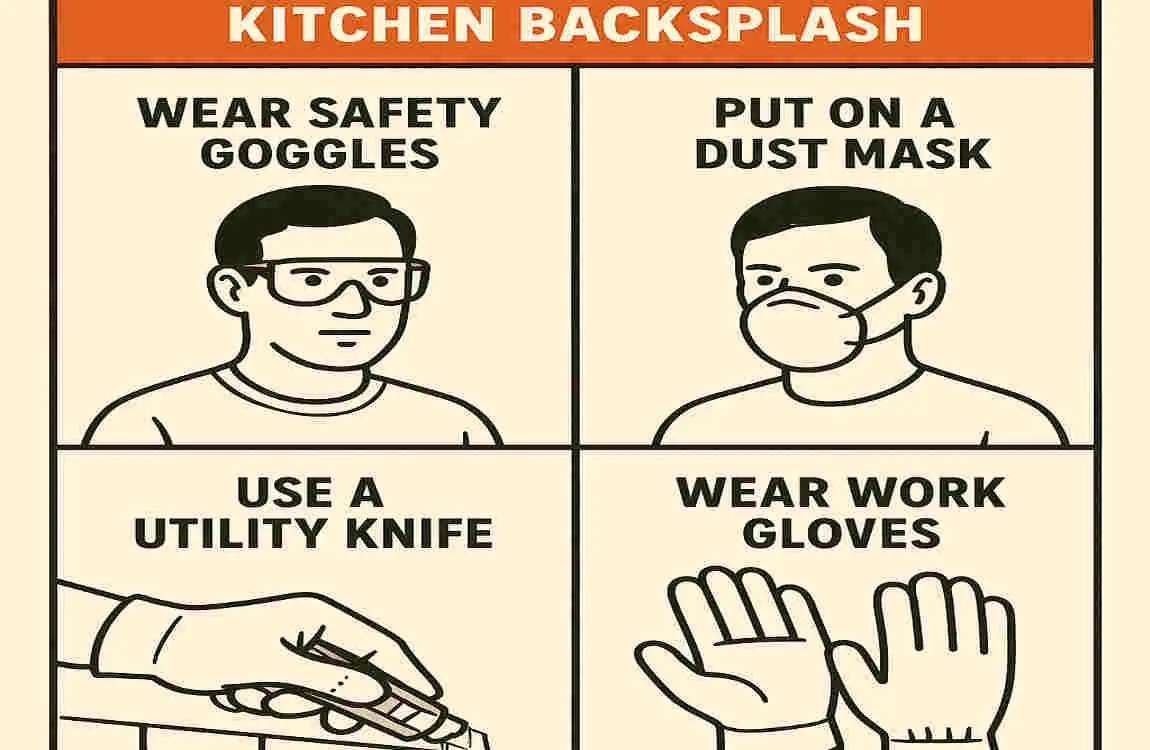
Safety cannot be stressed enough:
- Always wear gloves, goggles, and a dust mask.
- Turn off the electricity when working near outlets.
- Work slowly and carefully to avoid cuts from sharp tiles.
- Dispose of old backsplash materials properly to prevent injury or environmental harm.
Your safety is the priority—never rush through removal.
Alternatives to Removing Your Kitchen Backsplash

Sometimes, removal isn’t necessary. You can try these alternatives:
- Refreshing grout: Cleaning or re-grouting grout lines can brighten your backsplash without removal.
- Painting or covering: Special backsplash paint or removable decals can give a new look with less effort.
- Covering with panels: Decorative panels can be installed over existing backsplashes.
If your backsplash is in good shape, these options might be more innovative and less invasive.
How to Remove Backsplash from Kitchen – FAQ (Short Version)
What Tools Do I Need?
- Putty knife or pry bar
- Hammer or mallet
- Utility knife
- Chisel
- Screwdriver
- Bucket and sponge
- Painter’s tape
- Drop cloth or plastic sheeting
- Safety gear (gloves, goggles, dust mask)
What Types of Backsplashes Can Be Removed?
- Tile: Most common, adhered with mortar or adhesive.
- Peel-and-Stick: Easier to remove, minimal damage.
- Glass or Metal Sheets: Requires careful handling.
- Stone or Mosaic: Heavier, more labor-intensive.
How Do I Prepare?
- Turn off power to outlets and switches.
- Protect surrounding surfaces with tape and cloths.
- Inspect the wall to understand the material and adhesion.
How Do I Remove a Tile Backsplash?
- Loosen the edge with a utility knife.
- Remove grout (if necessary).
- Pry off tiles with a putty knife or pry bar.
- Remove adhesive or mortar with a chisel.
- Repair the wall with spackling compound.
How Do I Remove a Peel-and-Stick Backsplash?
- Lift a corner with a utility knife.
- Peel it off slowly.
- Remove residue with adhesive remover or alcohol.
How Do I Remove a Stone or Mosaic Backsplash?
- Break the tiles with a hammer.
- Pry off pieces with a chisel.
- Remove mortar with a putty knife.
Will It Damage the Wall?
Yes, expect some damage like torn drywall or holes. Work carefully and repair the wall afterward.

